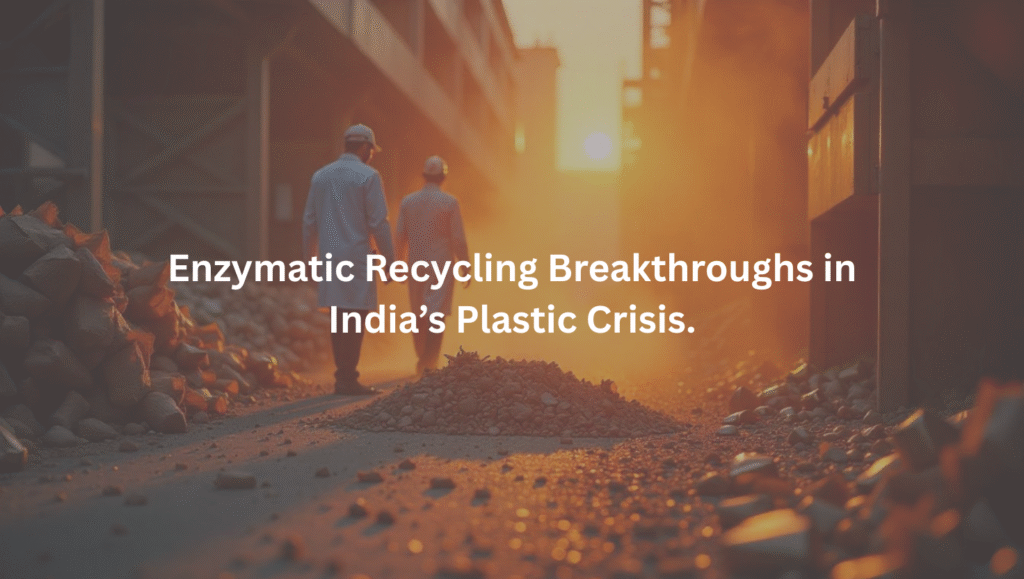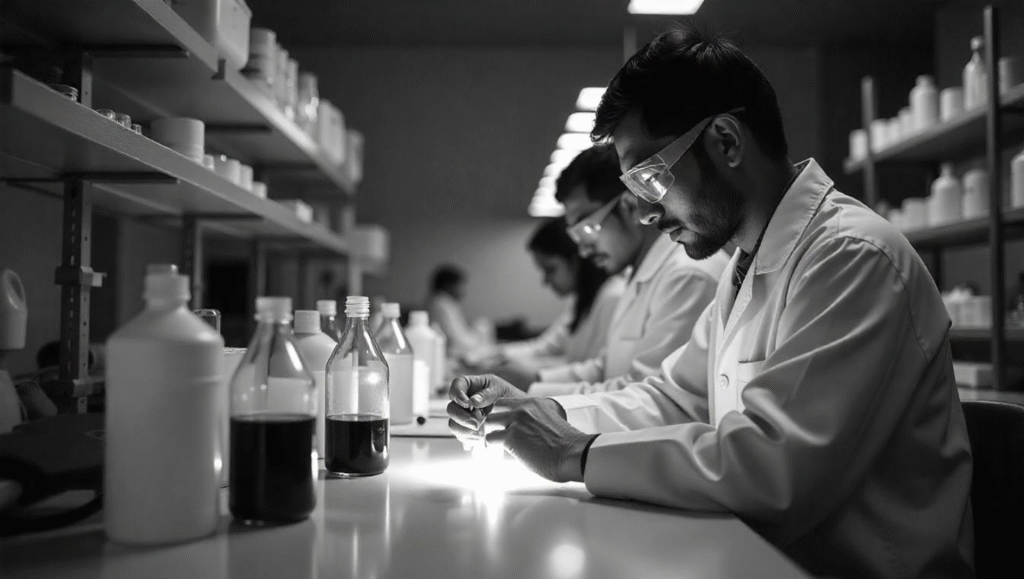
With India contributing 26 million tonnes of plastic waste every year to the world’s 350 million-tonne crisis, never before has the need been more pressing to tackle plastic pollution.
With conventional mechanical recycling, confined to 9% of plastic waste globally, unable to cope with degradation and contamination, chemical and enzymatic recycling technologies are stepping in as game-changers.
Startups such as Australia’s Samsara Eco are pioneering this transformation, employing enzyme-based technologies to disintegrate plastics into recyclable monomers, providing a route to unlimited recycling.
Although these innovations complement India’s Swachh Bharat Mission and world sustainability agendas, economies of scale and infrastructure deficits are major barriers.
Mechanical recycling, through plastic shredding and melting, compromises material quality after 3-5 cycles and usually leads to downcycling into products of lower value.
Only transparent, pure plastics such as PET (12% of the world’s waste) are feasible, ruling out multicolored or multilayered ones. Chemical recycling, such as by enzymatic processes, transcends these boundaries by deconstructing plastics into their molecular constituents—monomers—thus making virgin-grade plastics producible without fossil fuel.
In India, where 60% of plastic waste ends up getting landfilled or burned, according to a 2024 CPCB report, these technologies hold the key to a circular economy and cutting the 2.8 gigatons of CO2 emissions set to be emitted from plastic production by 2050.
Samsara Eco, established in 2020 with origins in the Australian National University (ANU), leads enzymatic recycling. Its own EosEco technology, which depolymerizes plastics such as PET, nylon 6, and nylon 6,6 into monomers within less than an hour at room temperature to conserve 3 tonnes of CO2 per tonne recycled, according to founders Paul Riley.
In contrast to mechanical techniques, Samsara’s process can handle colored, mixed, and contaminated plastic, with 95% biodegradation and carbon-neutrality. Collaborations with Woolworths and Lululemon have highlighted its capabilities: Woolworths intends to utilize 5,000 tonnes of recycled PET in packaging by 2025, while Lululemon has introduced the world’s first enzymatically recycled nylon 6,6 garment in 2024.
Samsara’s Jerrabomberra plant, opening mid-2025, will recycle 20,000 tonnes a year, aiming for 1.5 million tonnes by 2030, saving 2.5 million tonnes of CO2.
Other startups are pushing the technology along. France’s Carbios, the leader in enzymatic recycling, created a hydrolase enzyme that recycles 90% of PET within 10 hours, with a 50,000-tonne unit opening in France later in 2025. Its collaborations with Michelin and Nestlé indicate scalability to food-grade rPET. Epoch Biodesign in the UK in 2023 raised USD 11 million to upscale enzyme platforms for the production of chemicals from plastic waste, while Oregon-based Birch Biosciences targets polyamides.
These are attempts at targeting the 150-200 million tonnes of plastic waste that pile up in landfills every year, since plastic consumption worldwide is likely to double by 2040.

In India, the transition to chemical recycling is in its infancy but holds promise. With a USD 204.81 billion packaging industry by 2027, enzymatic recycling could transform e-commerce and FMCG sectors. Startups like Banyan Nation in Hyderabad are exploring chemical recycling for PET and HDPE, though enzymatic methods remain limited. IIT Delhi’s 2024 research on enzyme optimization for PET degradation signals academic progress.
The Plastic Waste Management Rules, 2016, and Extended Producer Responsibility (EPR) policy require 25% of packaging to contain recycled content by 2030, fueling demand for superior rPET. Consumer attitudes, with 65% of Indian urban dwellers preferring sustainable packaging as of a 2024 Nielsen survey, also lend support.
Government push is spurring expansion. The Production-Linked Incentive (PLI) program, allocating Rs. 50,000 crore to the National Research Foundation (NRF), encourages R&D of green technology. The Raising and Accelerating MSME Performance (RAMP) program supports smaller businesses, which perform 40% of recycling, to adopt cutting-edge practices. PM Gati Shakti enhances the logistics of waste collection, necessary for enzymatic recycling’s feedstock requirements.
The Skill India Digital Hub has provided training to 2 million waste management workers since 2023, although just 5% of them are trained in enzymatic technologies, according to Nasscom.
Challenges are numerous.
Enzymatic recycling is 20-30% more expensive than mechanical processes, with rPET being more expensive than virgin plastic, according to a 2024 report by SIDBI.
Enzyme optimization is needed to scale up since the current degradation rate is slow for industrial quantities. Infrastructural deficiencies, such as irregular power supply in Tier 2 cities, interfere with processing, costing SMEs Rs. 1-2 lakh each month, according to industry discourse.
Low awareness characterizes just 10% of MSMEs using chemical recycling, and bureaucratic slowdowns in patent clearances (4-6 years compared to China’s 2) hinder innovation. ASEAN countries’ low labor costs pressure competition globally.
Experts suggest solutions. Subsidies under the Technology Upgradation Scheme can make costs low. Scaling up Skill India training in biocatalysis can plug skill gaps. Enhancing 5G connectivity and power reliability, as mapped under PM Gati Shakti, will enable processing. Public-private partnerships with IITs and ANU-like institutions can speed R&D. CII-conducted campaigns can sensitize MSMEs and consumers, increasing demand.
Enzymatic recycling, spearheaded by startups such as Samsara Eco, holds promise for the plastic epidemic in India, breaking away from linear waste streams to circular supply chains.
With a USD 3 billion market size for recycling by 2030, these innovations can cut emissions and landfill waste by half.
Removing the obstacles of cost, expertise, and infrastructure, India can spearhead the world’s shift to endless recycling, making plastic waste a resource for a future at sustainability.
